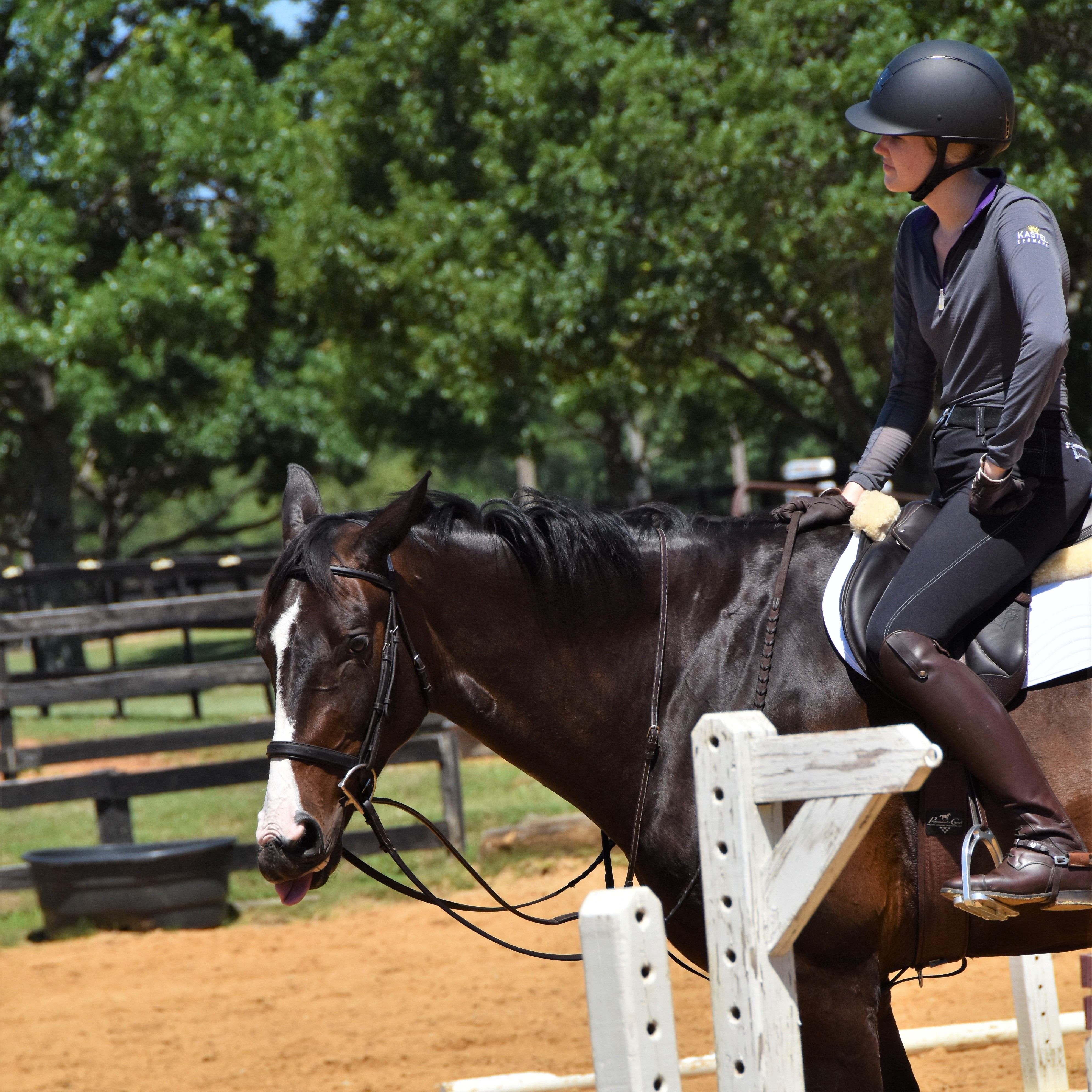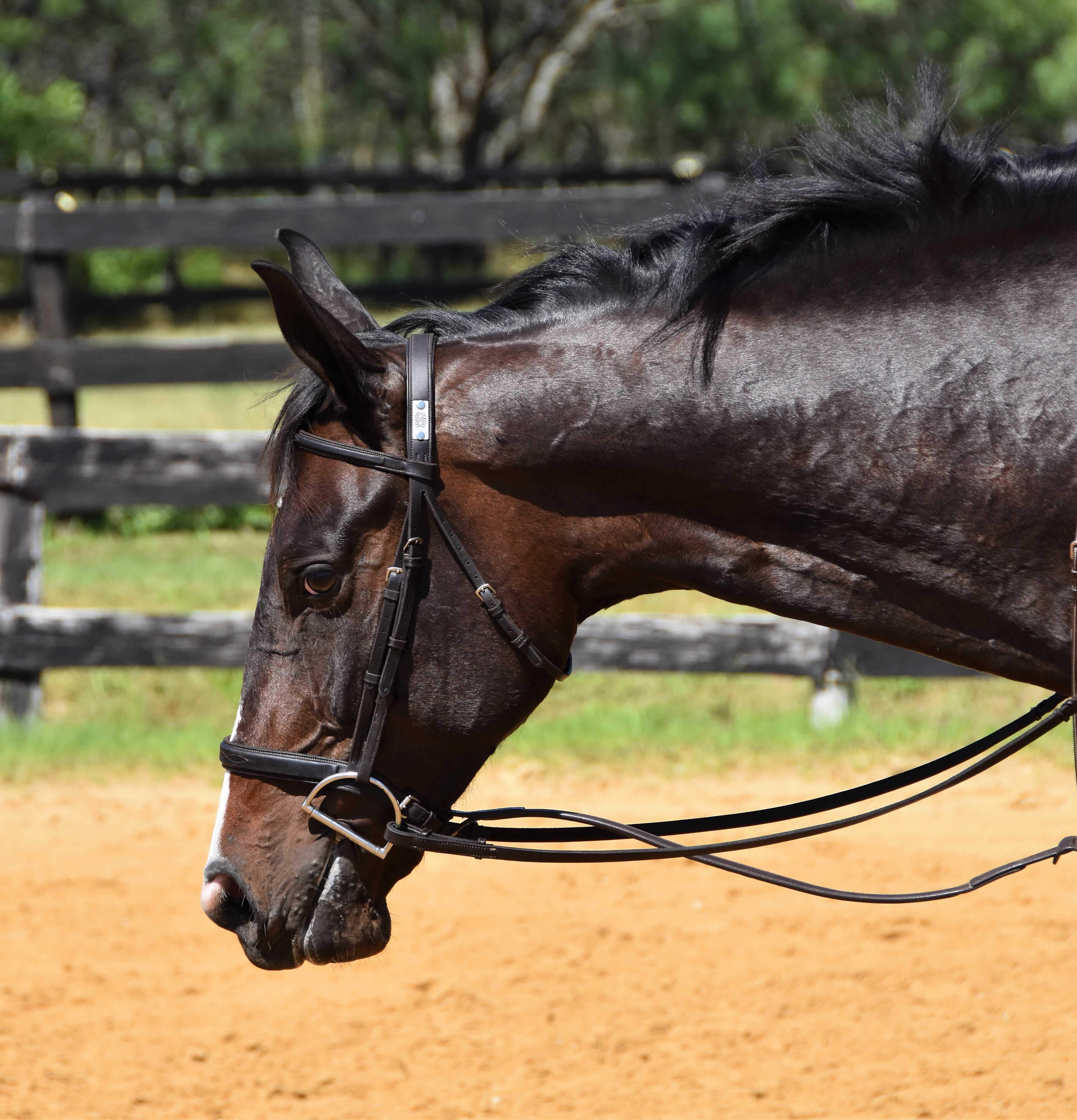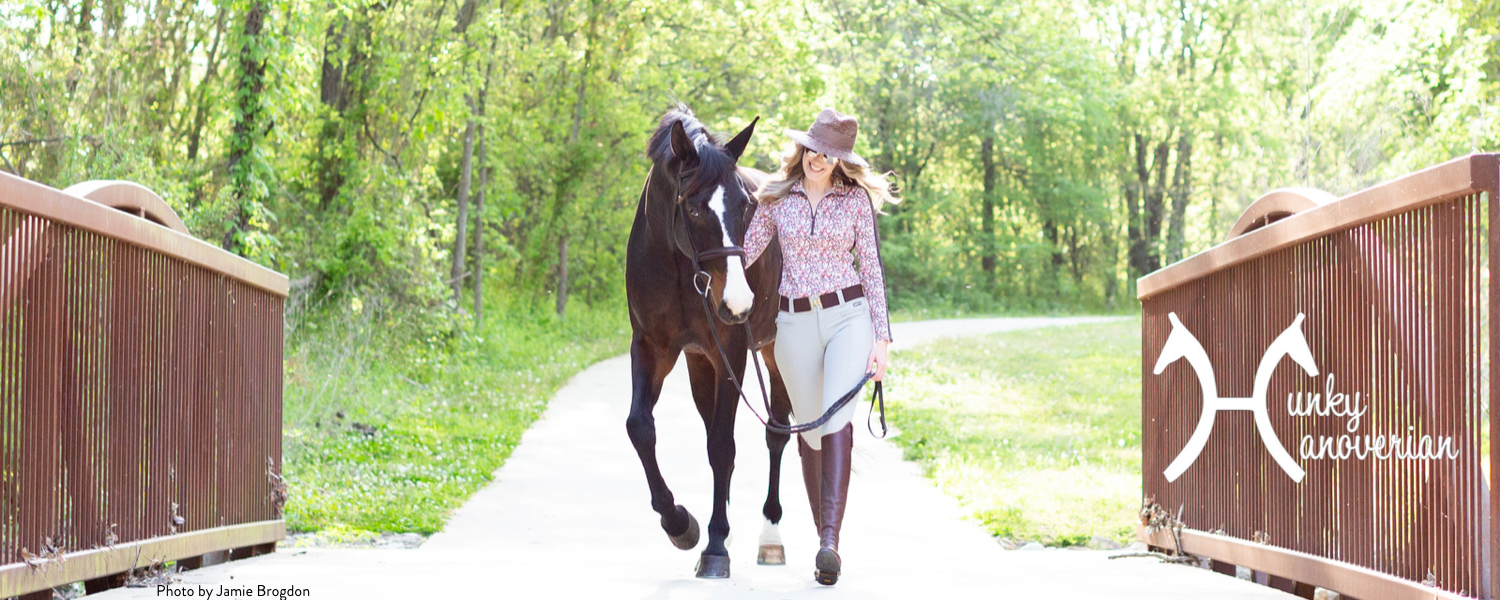I was planning to write about my jump lesson this past Saturday today, but I had an awesome flat lesson last night so I want to re-hash it before I forget the details.
The large majority of my lessons are jump lessons. That being said, the first 10-15 minutes of every jump lesson is flat work, but since almost all my lessons are groups, there isn’t a ton of time for super individualized attention/discussion without slowing the whole group down. I have a fairly strong flat work background, so even though Rio is undeniably one of the greener horses at my barn, I don’t tend to struggle with the flat portion of our lessons very often, but I also don’t always feel like we are getting the best possible quality of work.

To remedy that feeling, I decided to take a private flat lesson. Lately when I ride outside of lessons (always flat work, my barn doesn’t allow jumping outside of lessons) I have been feeling a bit lost about what to work on. Our trot work lately feels super strong and I have no qualms there, it’s when I get to the canter that I have been feeling a bit lost. Not to sound like a broken record, but Rio’s canter is tough. I really wanted to be able to talk through the best way to approach it, and discuss any issues that come up in detail.
I am excited to say that our lesson went FANTASTIC. It was exactly what I was looking for. As usual, our trot work was really strong, but I did get some much needed reminders about staying light with my hands, specifically not carrying him in the contact during our collected trot work.

My real questions were concerning the canter work though. I explained to my trainer that some days it feels amazing and some days it feels like riding a square wheel, and asked how I should best approach it when I’m on my own. Trainer Julie rides Rio fairly often (2-3 days a week) and is the one who competes him in the pro classes at shows, so she is very familiar with his abilities. She explained that although he has come a long way in the past year, he is still green. He is also still getting stronger, and we have to be very fluid with his training.
Essentially, there isn’t any set formula to riding his canter, I will really need to evaluate the horse I have that day, and ride every step. Some days the canter won’t be as good as other, and on those days I need to be ok with 1-2 good steps at a time. Some days I’ll get 4-5 great steps at time. Sometimes, the whole ride will be excellent. She reminded me that he is a trier, and that I need to continue to praise any improvement and not expect his best quality every day.

This makes total sense of course, but is also easier said then done. We actually started to work the canter at this point, and she pointed out several things I need to continue to improve one to help Rio do his job. When I pick up the canter for the first time in a ride, my first thoughts needs to be forward and straight. Tracking left, he tends to slide out his outside shoulder, so straight this direction might means I may need a bit of counter bend initially to drive the point home (but not before going forward!). Going to the right he is pretty straight, but I tend to hang on my inside rein and “torque” my body, aka let my hip collapse and pop out to the outside so I’m leaning inside with my upper body.
While identifying these issues we were also focusing on getting his rear end going. Now it was a bigger canter then I would want on course, but she drove the point home that this is how I need to start my rides. I can’t even think about compressing his step until his hind end is engaged and he is straight. Once we had spent time really sending him straight and forward I was able to start taking more of a feeling focusing thinking more about obtaining an uphill balance. Since his rear was nicely engaged at this point, he was able to lift in front and shorten his step while still maintaining a good quality rhythm.

The other major thing we focused on was quality downward transitions. I’ll admit, I am lazy. After a jump course, or just in general anytime when we drop down from the canter, Rio likes to slam on the breaks and lurch into the walk, and I let him. I’m also tired usually and ready for a break, so I allow sloppy downwards.
This is obviously not the first time my trainer has brought up the need to execute balanced downward transitions, but she REALLY made it a focus point in our lesson. Specifically, we practiced balancing the canter and going into a balanced trot, instead of going straight to the walk, and then making sure he doesn’t lean into my hands during and directly after the transition. It was hard, but I really see how balanced downwards need to become a regular part of our work.

I hear you DQ’s out there! Good canter to trot transitions are super basic- training level work essentially. But ya see, I rarely have to execute canter trot transitions at shows. Yes, at the end of a course we typically transition down to the trot to finish out before leaving the ring, but by that point at shows I am honestly so relieved to be done that I don’t really care if my canter to trot is perfectly balanced, and chanced are it will make zero difference in my overall score. And ye,s we may get asked to canter-trot in an under saddle class, but I can fake it enough that it’s not an issue. So no, I haven’t focused a lot on it and yes, I have let my horse slide into the habit of falling into a walking heap after canter work or after jumping. Now I am going to have to work that correct that, and I step-up my transition game.
Anyone else feel like admitting to some of their bad/lazy rider habits?! Don’t let me be the only one!
